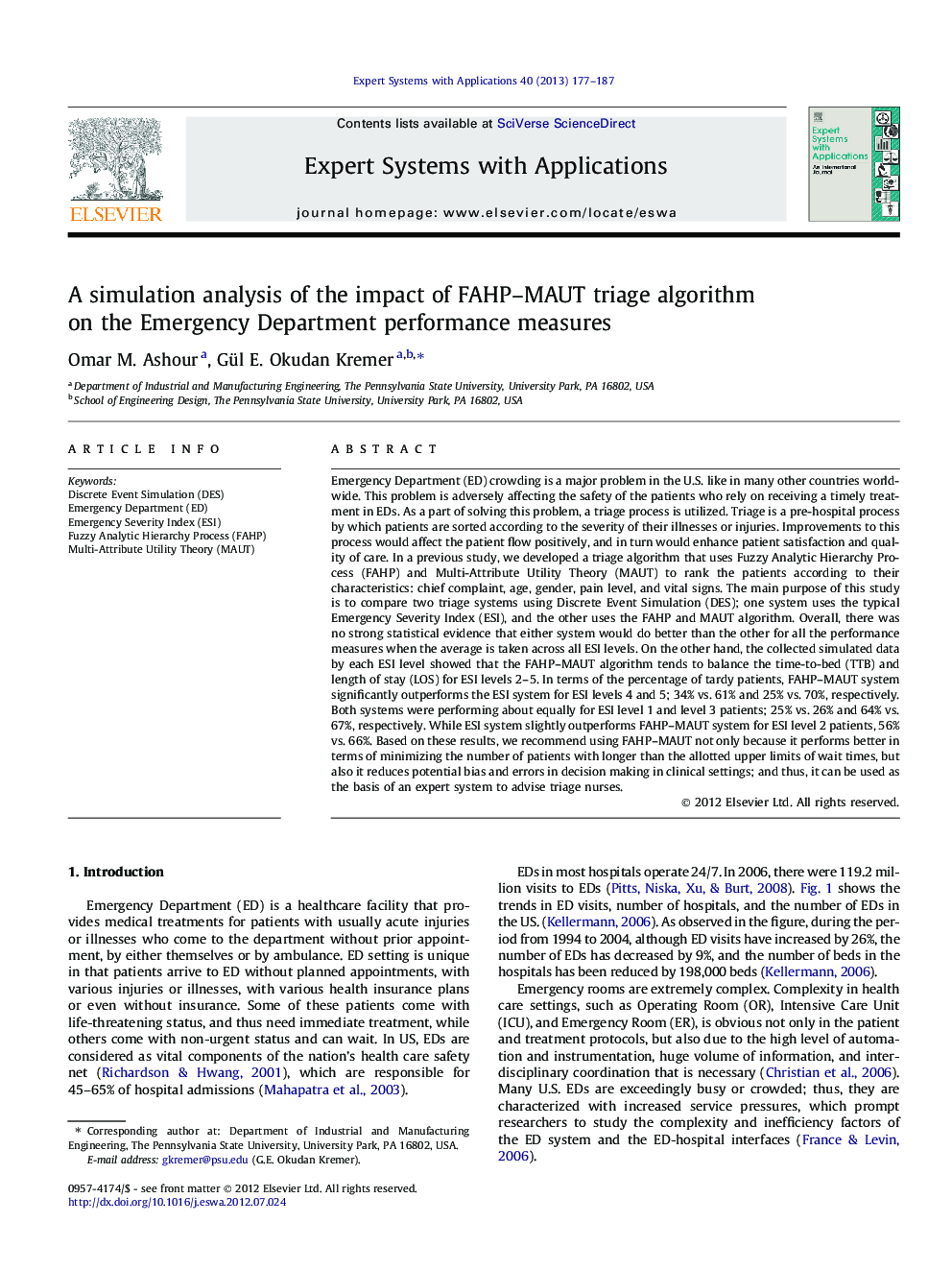| کد مقاله | کد نشریه | سال انتشار | مقاله انگلیسی | نسخه تمام متن |
|---|---|---|---|---|
| 384205 | 660842 | 2013 | 11 صفحه PDF | دانلود رایگان |

Emergency Department (ED) crowding is a major problem in the U.S. like in many other countries world-wide. This problem is adversely affecting the safety of the patients who rely on receiving a timely treatment in EDs. As a part of solving this problem, a triage process is utilized. Triage is a pre-hospital process by which patients are sorted according to the severity of their illnesses or injuries. Improvements to this process would affect the patient flow positively, and in turn would enhance patient satisfaction and quality of care. In a previous study, we developed a triage algorithm that uses Fuzzy Analytic Hierarchy Process (FAHP) and Multi-Attribute Utility Theory (MAUT) to rank the patients according to their characteristics: chief complaint, age, gender, pain level, and vital signs. The main purpose of this study is to compare two triage systems using Discrete Event Simulation (DES); one system uses the typical Emergency Severity Index (ESI), and the other uses the FAHP and MAUT algorithm. Overall, there was no strong statistical evidence that either system would do better than the other for all the performance measures when the average is taken across all ESI levels. On the other hand, the collected simulated data by each ESI level showed that the FAHP–MAUT algorithm tends to balance the time-to-bed (TTB) and length of stay (LOS) for ESI levels 2–5. In terms of the percentage of tardy patients, FAHP–MAUT system significantly outperforms the ESI system for ESI levels 4 and 5; 34% vs. 61% and 25% vs. 70%, respectively. Both systems were performing about equally for ESI level 1 and level 3 patients; 25% vs. 26% and 64% vs. 67%, respectively. While ESI system slightly outperforms FAHP–MAUT system for ESI level 2 patients, 56% vs. 66%. Based on these results, we recommend using FAHP–MAUT not only because it performs better in terms of minimizing the number of patients with longer than the allotted upper limits of wait times, but also it reduces potential bias and errors in decision making in clinical settings; and thus, it can be used as the basis of an expert system to advise triage nurses.
► Discreet Event Simulation has been used to compare two triage algorithms: ESI vs. Fuzzy MAUT.
► No strong statistical evidence showing one system would do better in terms of system performance measures.
► In terms of the tardiness measure, the two systems are statistically different.
► FAHP–MAUT algorithm outperforms the ESI for acuity levels 4 and 5.
► ESI system outperforms FAHP–MAUT system for acuity levels 2 and 3.
Journal: Expert Systems with Applications - Volume 40, Issue 1, January 2013, Pages 177–187